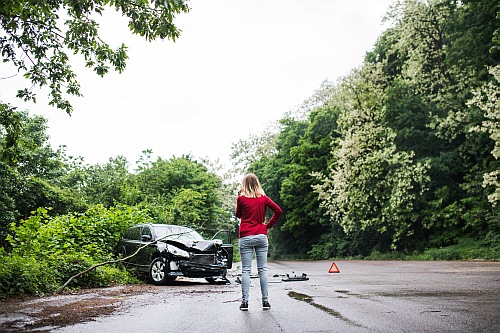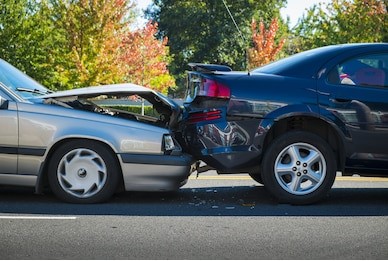Defendants who violate safety statutes and thereby cause injury can be held accountable for the harms they cause under a doctrine called “negligence per se.” This doctrine came up in a recent case when a woman who was a surviving spouse appealed a grant of summary judgment in favor of several companies. The case arose out of a two-car crash resulting in the death of the woman’s husband. The woman and estate appealed the trial court’s order granting a motion to dismiss.
The decedent was killed in 2007, when the car he was riding crashed into another car. The man’s coworker was driving the car, and another co-worker was going to lunch with them. The man was sitting in the backseat and the other coworker was sitting in the front. The driver turned left at an intersection. As he turned, his car was hit by Ivan Crisan’s car. Crisan was traveling toward the intersection. There was a blind spot in making the turn, due to some shrubbery.
The shrubbery was on a property owned by a defendant business, which was leased by another business, which hired a landscaping company to cut the grass, blow leaves, and cut back bushes.
The man’s estate sued, asserting both drivers were negligent. It also asserted a claim of negligence per se against the businesses in connection with how the shrubbery was maintained. The state argued the two companies were negligent in installing the shrubbery and failing to maintain it. Over a year after filing the suit, the estate tried to add the landscaping company as a defendant, asserting it was negligent in performing its duties.
The businesses and the landscaper filed motions for summary judgment. The estate claimed that it had based the negligence per se claim on OCGA § 32-6-51 (b) (3). This statute provides that it is unlawful for someone to maintain any unauthorized sign, device, signal, or other structure that obstructs a clear view from one road to any portion of another road.
A prior Georgia Supreme Court case found that, where vegetation is purposely planted, it can constitute a structure for purposes of that statute. In that case, the Georgia Supreme Court had found that maintaining that kind of obstruction constituted negligence when it created a traffic hazard and was unauthorized.
The estate had to show that the shrubbery created a danger and was placed at the intersection without government authorization. The motions for summary judgment claimed that the estate had failed to provide evidence supporting the claim that the shrubbery lacked appropriate authorization.
The estate argued that proving a lack of governmental authorization was not a prerequisite for liability under the statute. But they also argued that the shrubbery was unauthorized because it blocked the sight line from one street onto another street. The trial court found that the estate had failed to establish an issue for the jury as to whether the shrubbery lacked governmental authorization.
The appellate court agreed with the lower court’s decision for different reasons. It explained that the prior Georgia Supreme Court case held that proof of a lack of governmental authorization was an element of a claim under OCGA § 32-6-51 (b). A plaintiff filing to obtain relief under that statute had to prove something more than the existence of an obstruction. It wasn’t good enough to prove shrubbery blocked sight lines.
The court explained that, once the defendants showed there was a lack of evidence that the shrubbery was unauthorized, it was up to the estate to present evidence showing the shrubbery was unauthorized. Instead, the estate had asserted the shrubbery violated county regulations and guidelines without actually proving those regulations or guidelines.
If you are hurt because a defendant violated a safety statute, you may have a claim under the negligence per se doctrine. Experienced Atlanta personal injury attorney Terrence R. Bethune can evaluate your case and fight for any compensation you may deserve. Contact us at 404-875-7800 or via our online form.
More Blog Posts
What is an Ante-Litem Notice in Georgia? February 28, 2014
Proximate Cause in Georgia Car Accidents, February 13, 2014
Tandem Driving Theory of Liability in Georgia Car Accidents, February 4, 2014
Subject Related Articles

Navigating Macon Car Accident Claims: Step-by-Step Guide
You’ve been in a Macon car accident, and now you’re faced with insurance claims, police reports, car repairs, and more. It can feel overwhelming trying
June 24, 2024

Avoid These Mistakes After a Car Accident in Carrollton
You’ve just been in a car accident in Carrollton. Even minor fender benders can be stressful events. But before you step out of the car
May 20, 2024

What to Do After a Hit-and-Run Accident
So you’ve just been in a hit-and-run accident. Your first thought is probably to chase down the other driver, but that may not be the
April 19, 2024





